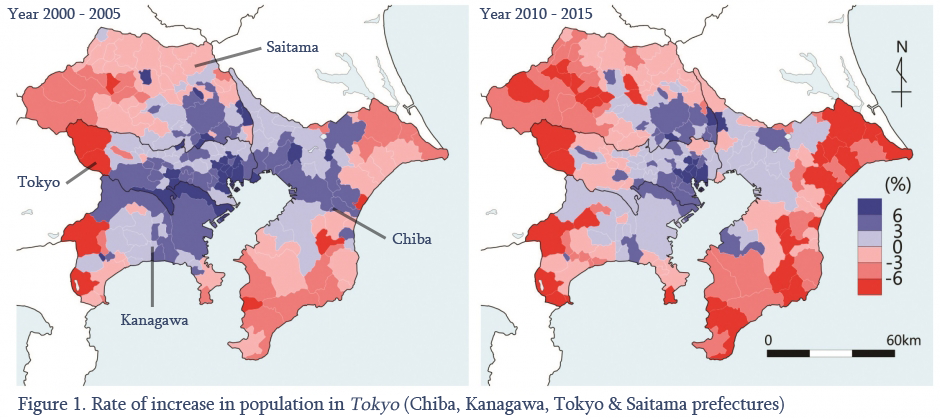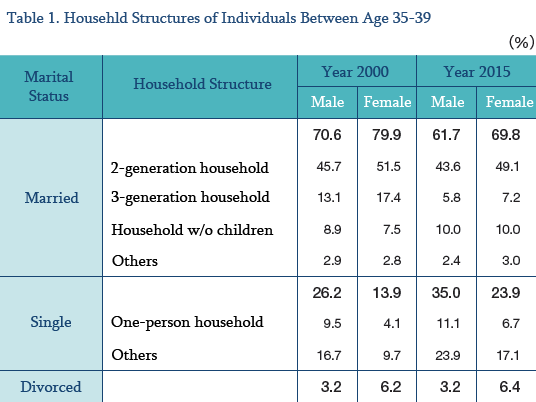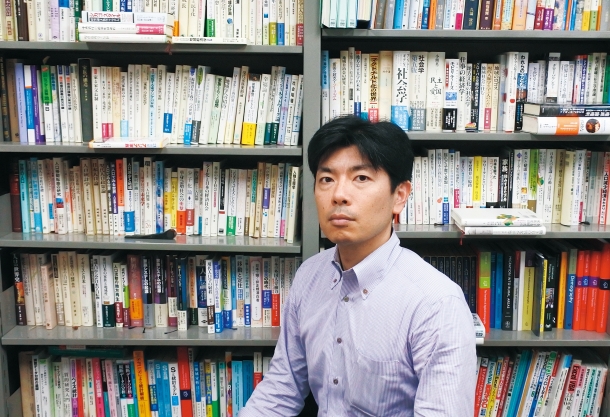Bold and creative inspiration necessary in building aging cities
Wed, Nov 7, 2018-
Tags
Shrinking cities

As Japan continues to experience aging population, a large number of cities in the nation continue to shrink in population. What happens if Tokyo (referring to the highly populated Chiba, Kanagawa, Tokyo and Saitama prefectures in the case of this article) follows the footsteps of other cities and starts to shrink in population?
From 2010 to 2015, Tokyo experienced an overall 1.4% growth in population. This number has decreased from the span from 2000 to 2005, which experienced 3.2% overall growth in population. While Tokyo continues to experience overall growth in population to this day, we can see by these numbers that the percentage increase over a period of five years has decreased by more than half since the period from 2000 to 2005. It is as if the spread of depopulation of aging cities are slowly extending their reach outwards, ultimately approaching Tokyo. As a matter of fact, the Japanese government has predicted and officially announced that Tokyo will soon start to decline in population in the near future.
What are the reasons that contribute to such phenomenon? The answers may lie in the ever diversifying family structures among Japanese people.

Diversifying family structures
Up until the 1980s, most people would get married and have children. In recent years, however, more and more people remain single or get married without bearing children.
If you take a look at the table below, it shows the types of household structures of married, single and divorced individuals between age 35 to 39 of year 2000 and 2015. While there are obvious difference between men and women in both 2000 and 2015, the changing trends from 2000 to 2015 are similar in both genders.

The table also shows that the percentage of married individuals have decreased since 2000 for both men and women. Among the married couples, the percentage of households which has children have also decreased, same goes to the number of three-generation households. On the other hand, the percentage of unmarried individuals have increased over the 15 year span. Lastly, couples who divorced have remained the same. Nevertheless, it should be noted that as the percentage of individuals who got married has decreased in the 15 years, a similar divorced trend in 2000 and 2015 suggests that the percentage of divorced among married couples have actually increased.
The above trends and diversifying family structures are some of the reasons why Japan’s population continues to age. Specifically, at least from the table itself, Japan’s population decreases because lesser people are getting married and even married couples are now choosing not to have children than before. In addition, aging population further worsen as people live longer due to better healthcare. These will ultimately result in a Tokyo that would experience a decline in population.
Looking into the future
While it is true that Japan is aging at a rapid rate as family structures continue to diversify, this phenomenon suggests that people now have much more freedom to choose the kind of life they wish to lead, a positive change in the society—in the past, it was considered the norm for people to get married and have children, resulting in having lesser freedom to choose a different lifestyle they wanted to due to social pressure.
On the other hand, we should also realize that there are also more and more married couples in the present day who want to have children but are able to due to various reasons, such as cost and working culture. It is thus important for us to look into such challenges and make improvement accordingly to realize a society that is optimal for bearing and raising children. Nevertheless, we should also be mindful not to pressure future generations to get married and have children, an idealized society in the past, to solve Japan’s aging population.
As we move into the future, Tokyo and many other similar cities are likely to experience aging population, the firsts since the modern era. What is required of us is to be flexible and to think out of the box as we find bold and creative ways to build our society.

Associate Professor Masakazu Yamaguchi from the Institute for Advanced Studies in Education
*This is a translated article and the original article is written in Japanese by Associate Professor Yamaguchi. In case of discrepancy, the Japanese version shall prevail.














